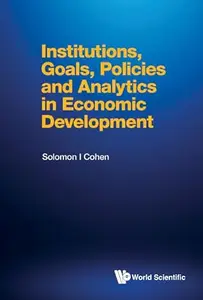
Free Download Institutions, Goals, Policies And Analytics In Economic Development
English | 2024 | ISBN: 9811277079 | 524 Pages | PDF (True) | 7 MB
The field of Development Economics (DE) has overstretched over time with risks of becoming shallow. There is a need for the compartmentalization of DE that focuses on simplification, oversight, productivity and relevance. This volume is a handbook in development economics with a compartmentalized perspective. It makes use of case study applications, both recent and over the last few decades. Next to 2 introductory chapters that elaborate on the development regions, the book falls in five parts. The first part, consisting of two chapters, displays structural/system changes in the development regions, examines institutions that discourage/promote development, and applies institutional modelling to related case studies of land reform in India and Chile. The second part, consisting of two chapters, takes the courageous step of discussing, measuring and posting the twin development goals of growth with redistribution as the primary development goals, and analysing their trade-offs for major countries in the six development regions. Secondary development goals are important but they correlate with the primary goals, and are considered as conditional. The third part, consisting of eight chapters, contains applications on multi-sector development policies. The applications use the Social Accounting Matrix and related economy wide modelling. They highlight alternative policies to achieve the development goals of growth and redistribution in Pakistan, Indonesia, Korea, UAE, Nepal, Sudan, Suriname and other countries. The fourth part, consisting of six chapters, examines human resource development and policies in the areas of labor market information systems, labor market adjustments, manpower forecasts, earnings profiles, educational plans, and intergenerational mobility, with case studies related to Pakistan, Indonesia, Colombia, Korea, Ethiopia. The fifth and final part, consisting of two chapters, focuses on world development and global governance; in particular the persistent income disparities at the global level in spite of the strengthened positions of the development regions in the world economy, the consequences of shifting dominance for world governance, the evaluation of the G-20, and a proposed more representative world governance. Throughout all chapters special attention is devoted to introducing and applying analytical methods that have proven to be fundamental in development economics.
